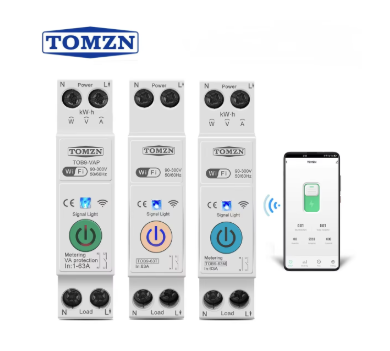Understanding Power Protection in Industrial Settings
Industrial equipment represents a significant investment for any manufacturing facility, and protecting these valuable assets from power-related damage is crucial for maintaining operational continuity. A 3 phase voltage protector serves as the first line of defense against potentially devastating power fluctuations that could compromise expensive machinery and disrupt production processes.
Modern industrial facilities rely heavily on three-phase power systems to operate their heavy machinery and sophisticated equipment. These systems, while efficient, are particularly vulnerable to voltage variations, phase imbalances, and other electrical anomalies that can lead to equipment failure and costly downtime. Implementing robust protection mechanisms has become non-negotiable in today's industrial landscape.
Core Components and Functionality of Industrial Voltage Protection
Essential Protection Features
At the heart of a 3 phase voltage protector lies sophisticated monitoring circuitry that continuously analyzes incoming power quality. These devices track voltage levels across all three phases, ensuring they remain within acceptable parameters. When deviations occur, the protector responds instantly, either by correcting the issue or safely disconnecting the protected equipment.
Modern voltage protectors incorporate multiple layers of protection, including surge suppression, undervoltage monitoring, and phase sequence verification. These features work in concert to provide comprehensive protection against various electrical disturbances that could otherwise damage connected equipment.
Advanced Monitoring Capabilities
Today's 3 phase voltage protector systems come equipped with sophisticated monitoring capabilities that provide real-time insights into power quality. Digital displays and communication interfaces allow maintenance teams to track voltage levels, phase balances, and protection events. This data proves invaluable for predictive maintenance and troubleshooting efforts.
The monitoring systems can also log historical data, enabling facility managers to identify patterns and potential issues before they escalate into serious problems. This proactive approach to power quality management helps prevent equipment failures and extends the operational life of protected machinery.
Benefits of Implementing Voltage Protection
Equipment Longevity and Reliability
Installing a 3 phase voltage protector significantly extends the lifespan of industrial equipment by preventing damage from power quality issues. Motors, drives, and sensitive electronic controls operate more reliably when protected from voltage fluctuations and phase imbalances. This enhanced reliability translates directly into reduced maintenance costs and fewer unexpected breakdowns.
Protected equipment maintains its performance specifications for longer periods, ensuring consistent product quality and production efficiency. The investment in voltage protection typically pays for itself many times over through avoided repair costs and extended equipment life.
Production Continuity and Downtime Prevention
Unplanned downtime due to equipment failure can cost industrial facilities thousands of dollars per hour in lost production. A 3 phase voltage protector helps maintain continuous operations by preventing power-related equipment failures. The protection system's rapid response time ensures that equipment is safeguarded before damage can occur.
The ability to maintain consistent production schedules not only preserves revenue but also helps facilities meet customer commitments and maintain their competitive edge in the market. Protection systems can be configured to provide early warnings of developing issues, allowing maintenance teams to address problems during scheduled downtime.
Installation and Integration Considerations
Strategic Placement and Sizing
Proper installation of a 3 phase voltage protector requires careful consideration of placement within the facility's electrical distribution system. Protection devices should be installed as close as possible to critical equipment while maintaining accessibility for maintenance. Sizing must account for both current requirements and potential future expansion.
System integrators must evaluate the specific needs of different equipment types and areas within the facility. Some applications may require additional protection features or redundant systems to ensure maximum uptime for critical processes.
Maintenance and Testing Protocols
Regular maintenance of voltage protection systems ensures their continued effectiveness in safeguarding equipment. This includes periodic testing of protection functions, verification of monitoring systems, and inspection of physical connections. Maintenance schedules should align with overall facility maintenance plans while accounting for specific protection device requirements.
Documentation of testing and maintenance activities helps track system performance and compliance with safety regulations. Training programs should be implemented to ensure maintenance personnel understand proper testing procedures and can interpret protection system data effectively.
Frequently Asked Questions
What makes a 3 phase voltage protector different from single-phase protection?
A 3 phase voltage protector monitors and protects all three phases of power simultaneously, ensuring balanced protection for industrial equipment. It includes specialized circuitry to detect phase loss, phase reversal, and phase imbalance conditions that don't exist in single-phase systems.
How quickly does a voltage protector respond to power anomalies?
Modern 3 phase voltage protectors typically respond within milliseconds of detecting a power anomaly. This rapid response time is crucial for preventing damage to sensitive equipment and maintaining production continuity in industrial settings.
What is the typical return on investment for voltage protection systems?
While initial costs vary, most facilities see a return on investment within the first year of installation through prevented equipment damage and reduced downtime. The exact payback period depends on factors such as equipment value, production costs, and local power quality conditions.
